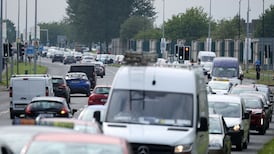The State is to receive a dividend of €19.5 million from the Irish Aviation Authority (IAA), bringing the total amount it has paid to the exchequer over the last five years to €62.2 million.
The figure, contained in the IAA’s annual report for 2018, which was published on Friday, is made up of an ordinary dividend of €7.5 million and a special dividend of €12 million.
The report also revealed details of a legal battle between the IAA and its former chief executive Eamonn Brennan, who resigned on December 29th, 2017.
The report said Mr Brennan has initiated legal proceedings against the IAA for breach of contract of employment in the amount of €782,466. The company is defending the claim.
The report stated that Mr Brennan had voluntarily waived 10 per cent of his official salary in the years preceding his resignation. It also said no performance-related pay had been paid to Mr Brennan in respect of the years 2010-2017.
Separately, operating profit at the IAA was down 5.9 per cent to €31.6 million from €33.5 million in 2017. The decrease was due to higher operating expenses, IAA chief executive Peter Kearney said.
Staff increase
The report showed Mr Kearney is currently paid €225,000 per annum. The group employed a total of 685 staff, which was up from 666 in 2017. It spent a total of €93.2 million on salaries and benefits during the year, which was up from €89.8 million.
A breakdown of salary brackets at the IAA shows 172 people earned €100,001-€125,000; 131 people earned €125,001-€150,000; 26 people earned €150,000-€175,000; while 14 people earned in excess of €175,001.
On Brexit, IAA chairman Michael McGrail said the group was working with “key aviation stakeholders to ensure that Irish aviation interests are protected”.
There was also a “large increase” in personnel licensing applications, driven mainly by flight crew and maintenance engineers looking to transfer European Aviation Safety Agency licences issued in the UK to licences issued by Ireland.
“The safety regulation division has been engaged in contingency planning with stakeholders for a hard-Brexit scenario which may disadvantage Irish air operators or maintenance organisations and associated aviation professionals,” said Mr McGrail.
The report said the IAA had made “great progress” in the construction of its new visual control tower at Dublin Airport. “The project will shortly move into the technology fit-out phase and is expected to be operational in mid-2020,” it said.
The IAA reported a 2.8 per cent increase in revenues in 2018, recording a turnover of €198.9 million compared with €193.4 million in 2017. It was the “busiest ever year” for Irish aviation, with the IAA overseeing more than 1.15 million flights.












